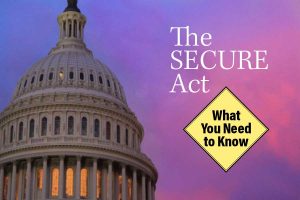
SECURE Act / Note to Clients and Friends
Don’t let legislation paralyze your planned giving marketing efforts.
Home » Estate & Gift Planning Fundamentals » Bequests » Page 3
CATEGORY

Don’t let legislation paralyze your planned giving marketing efforts.

Your donors will be asking about SECURE, so you’d better know the facts and be ready with the answers — all of the answers. You need to position yourself as an expert resource.

Most “experts” place the practice as having been birthed in the 1970s — or maybe as far back as the ’40s. So it’s safe to say the first planned gift must have been made sometime in those decades. Right?

Do you know how to tap into a donor’s motivation to give? Have you nailed “the Passion Question?”

What’s the big deal about planned giving anyway? When it comes to things we don’t understand, or may be intimidated by, there’s always a reason to avoid taking a closer …

That canned “planned giving newsletter” you’re paying for is viewed by your recipients as a “death brochure” and is going right into the trash. Spend your money wisely. (By Tom Ahern)

What does wanting to meet (and marry) a rich guy have to do with planned giving? More than you think, and it all boils down to the meaning of the word “rich.” This puts “I want to meet a rich donor” in a whole new light.

For the really big gifts, ask for the residue. The $100,000 was appreciated. But the 8.2 million went elsewhere.

Long-term study shows multiple benefits for charities to get in the estate plan sooner. We all know charitable estate giving is a big deal. In comparison, despite all of the media attention and conversation generated by corporate giving, annual estate giving has always been much larger. (In some years, charitable estate gifts are more than double all corporate gifts.) Of course, we all know that to receive any estate dollars, your organization must get in the will or other estate

Question My nonprofit organization currently uses all bequest proceeds for operating expenses. The family of a recently deceased donor has questioned this and wants us to designate the funds for endowment (what is an endowment). What should we do? Answer It’s important to remember that only funds explicitly restricted by the donor can serve as a true endowment (importance by Deb Ashton). If a donor’s will does not specify a restriction, these funds are technically unrestricted and can be used